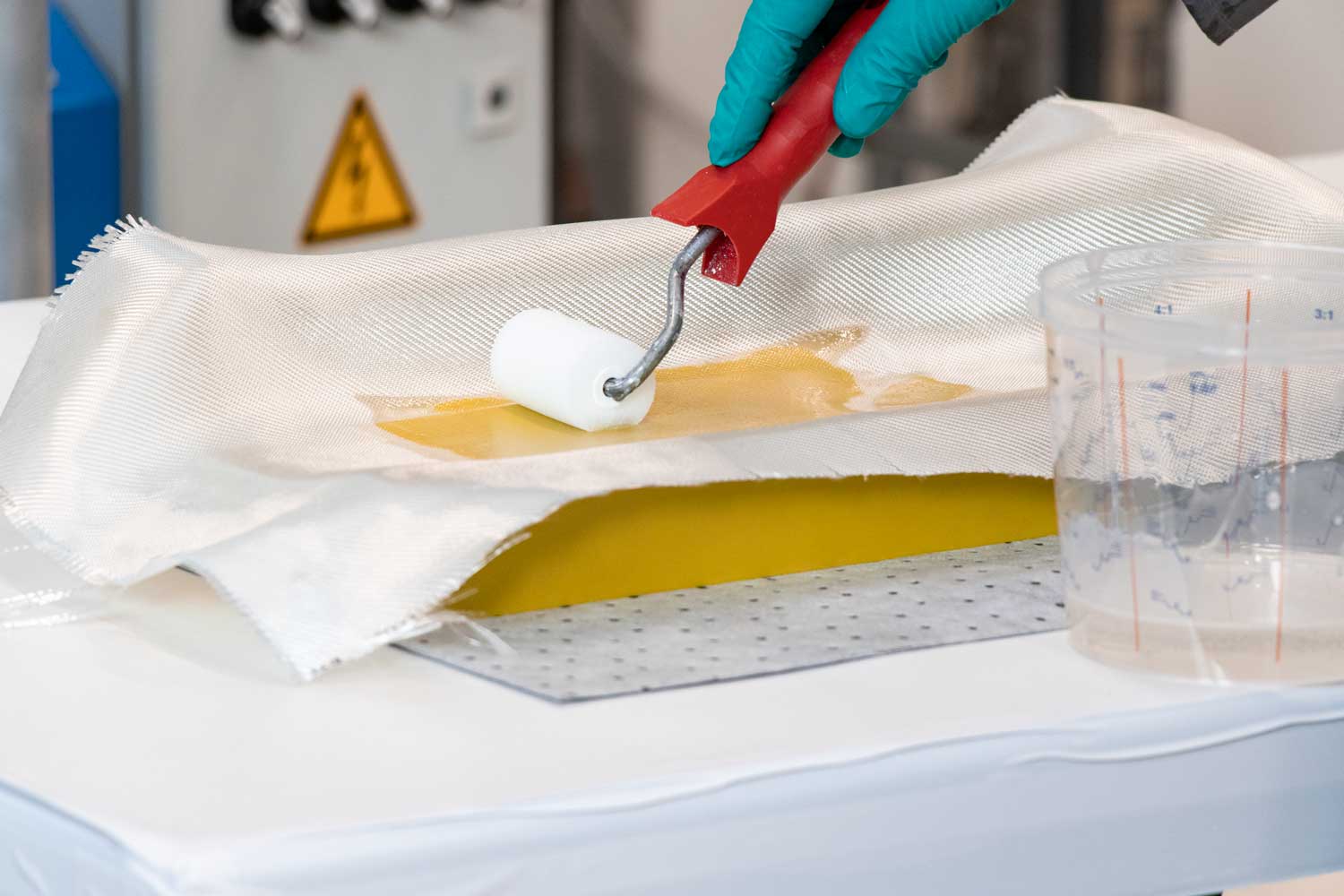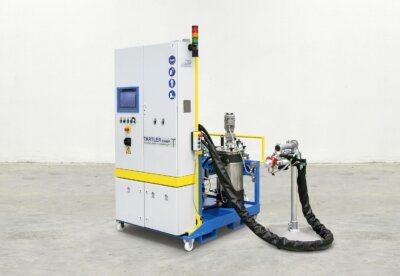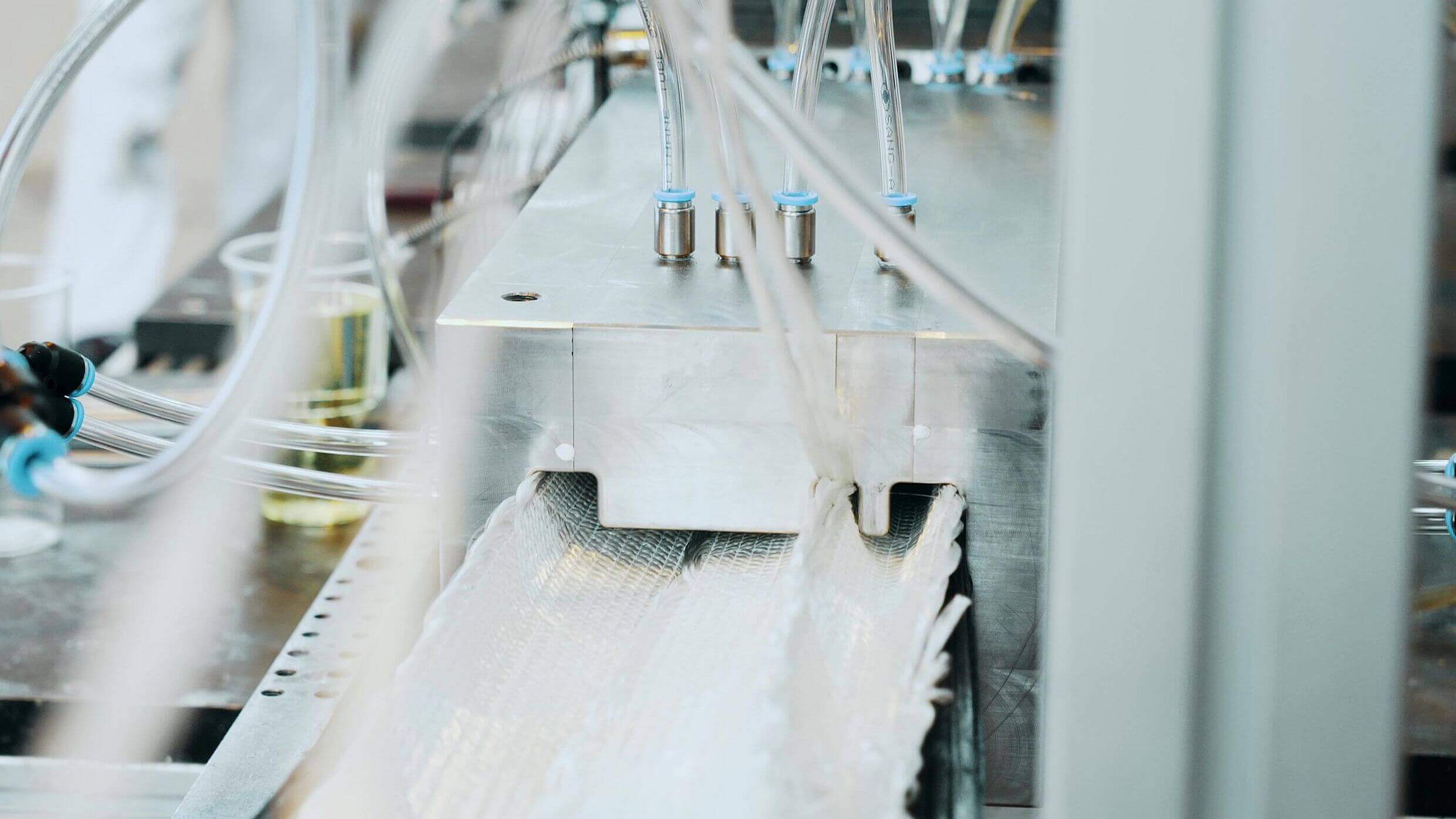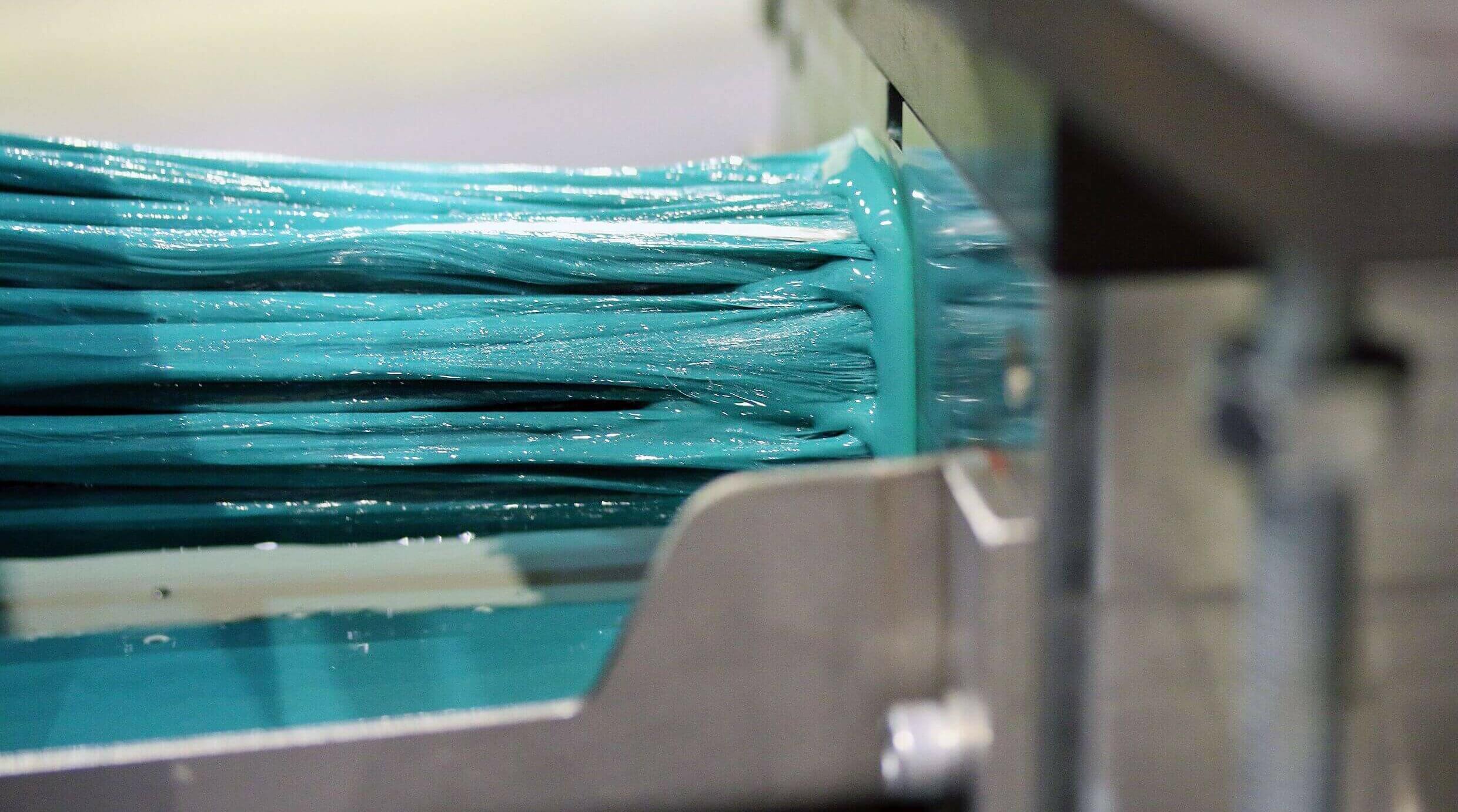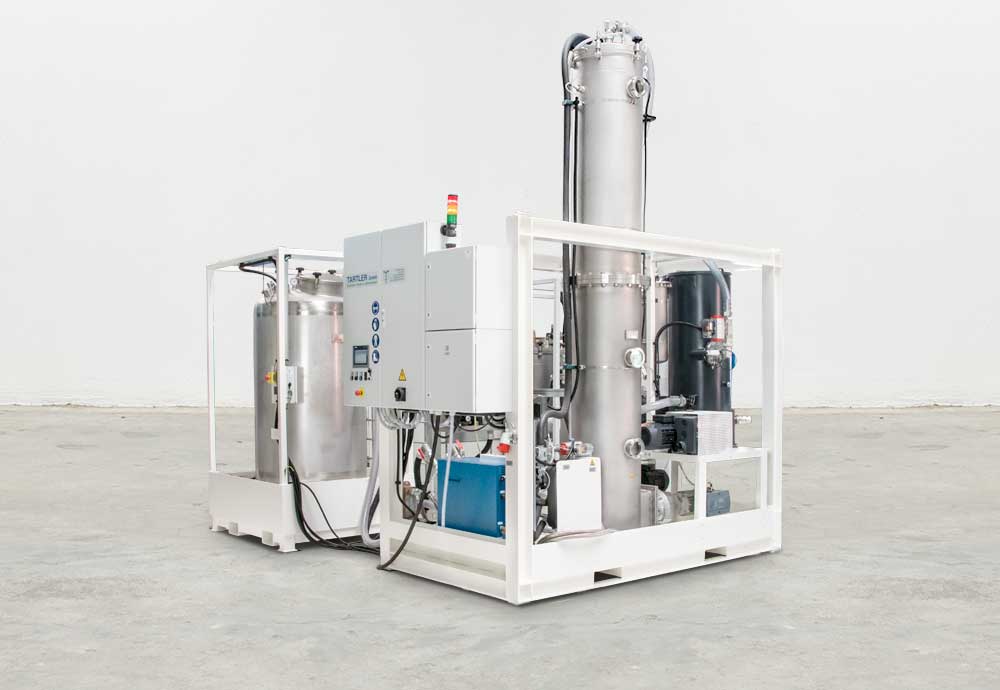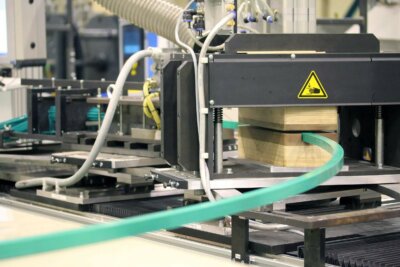
The result of pultrusion is a lightweight but highly resilient profile and molded part made of GRP or CFRP. (Photo: PulNet)
First degas, then mix
Today, pultrusion in its industrial form is a multi-stage process at the end of which lightweight profiles or molded parts made of glass or carbon fiber reinforced plastic are produced. One of the first processing steps is to guide the fiber reinforcement (nonwovens, mats, knitted fabrics, etc.) through an impregnation trough or a profile mold, which contains a synchronously generated matrix of liquid polyurethane (PU) or epoxy resin and various additives (hardener, release agent, color pigments, etc.) and dose it into the pultrusion mold via a pressure control system. Since the quality of the mixture of these components is of decisive importance for the optimum cross-linking of the GRP or CFRP fabrics with the resin matrix produced, TARTLER recommends the use of a degassing station of the T-EVAC type to users of pultrusion. This is because, apart from the manifold possibilities of positively influencing the mixing quality via the control of the Nodopur and the use of the most suitable dynamic mixers, this opens up further potential for improving product quality for the operator of a pultrusion plant. The reason for this is quickly summed up: With a vacuum <5 mbar (abs.), the T-EVAC evacuation system removes all air and moisture from the resins and hardeners intended for processing, so that the Nodopur can produce extremely homogeneous, high-quality compounds that produce the best composite results in pultrusion.
